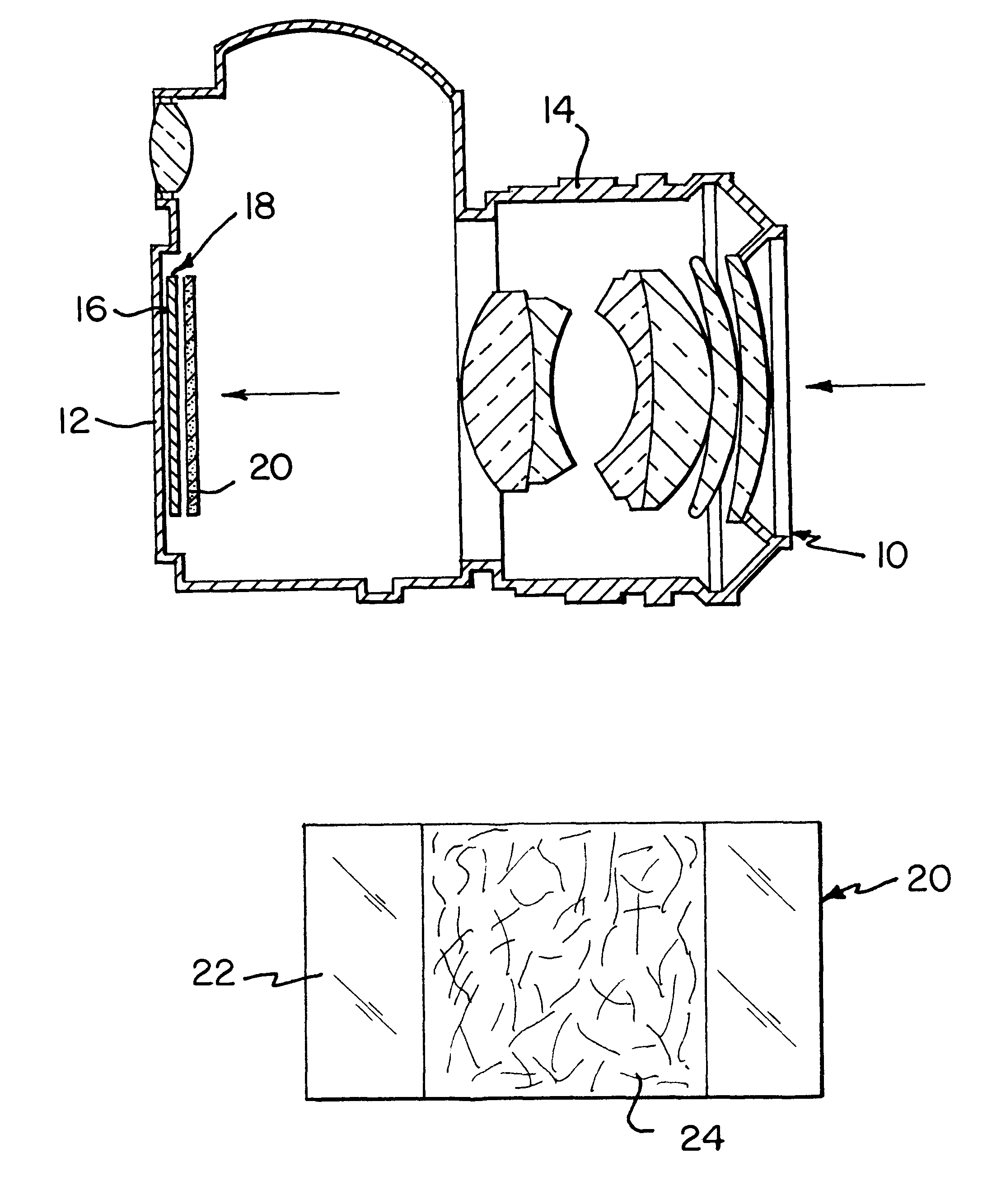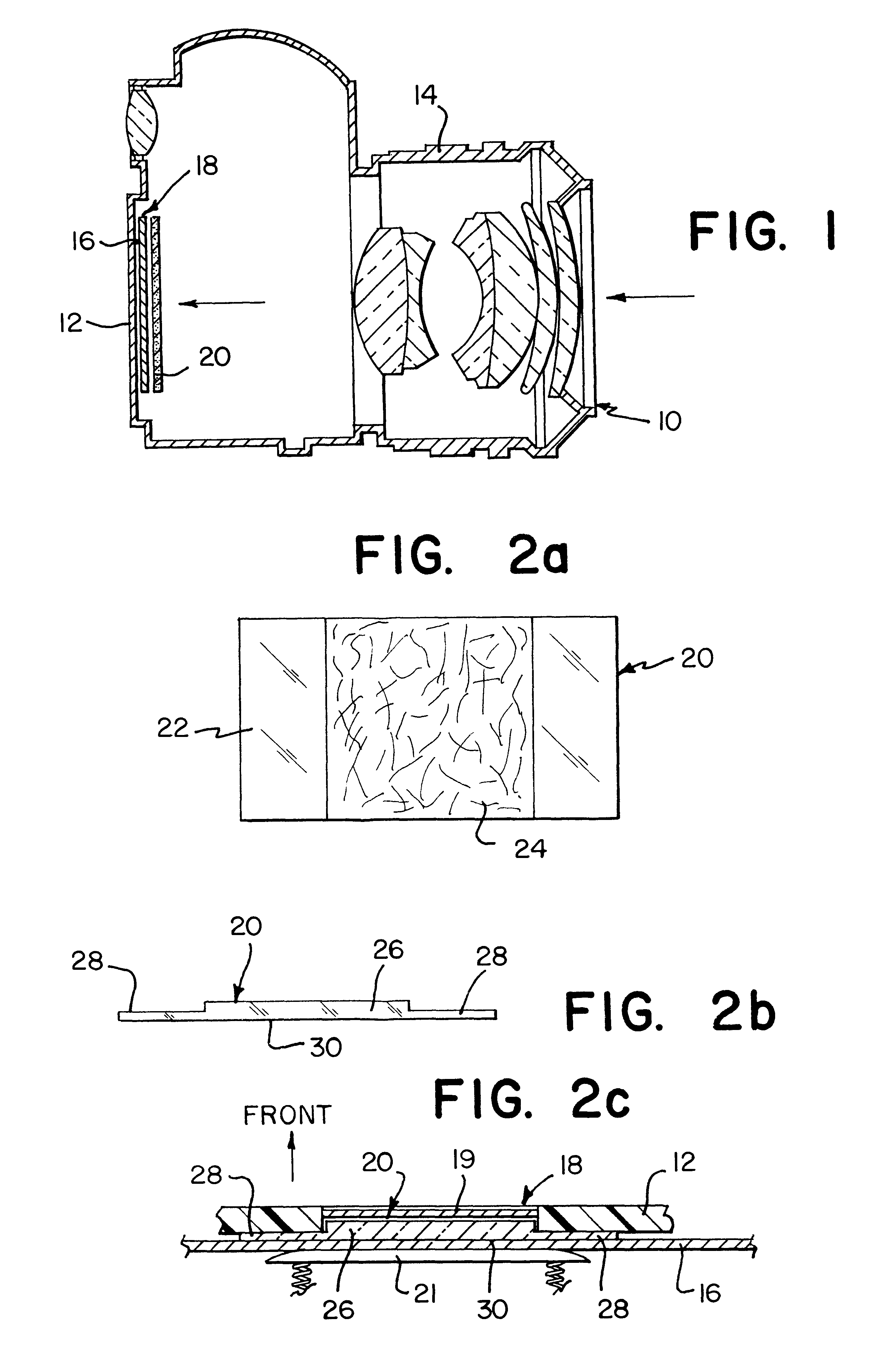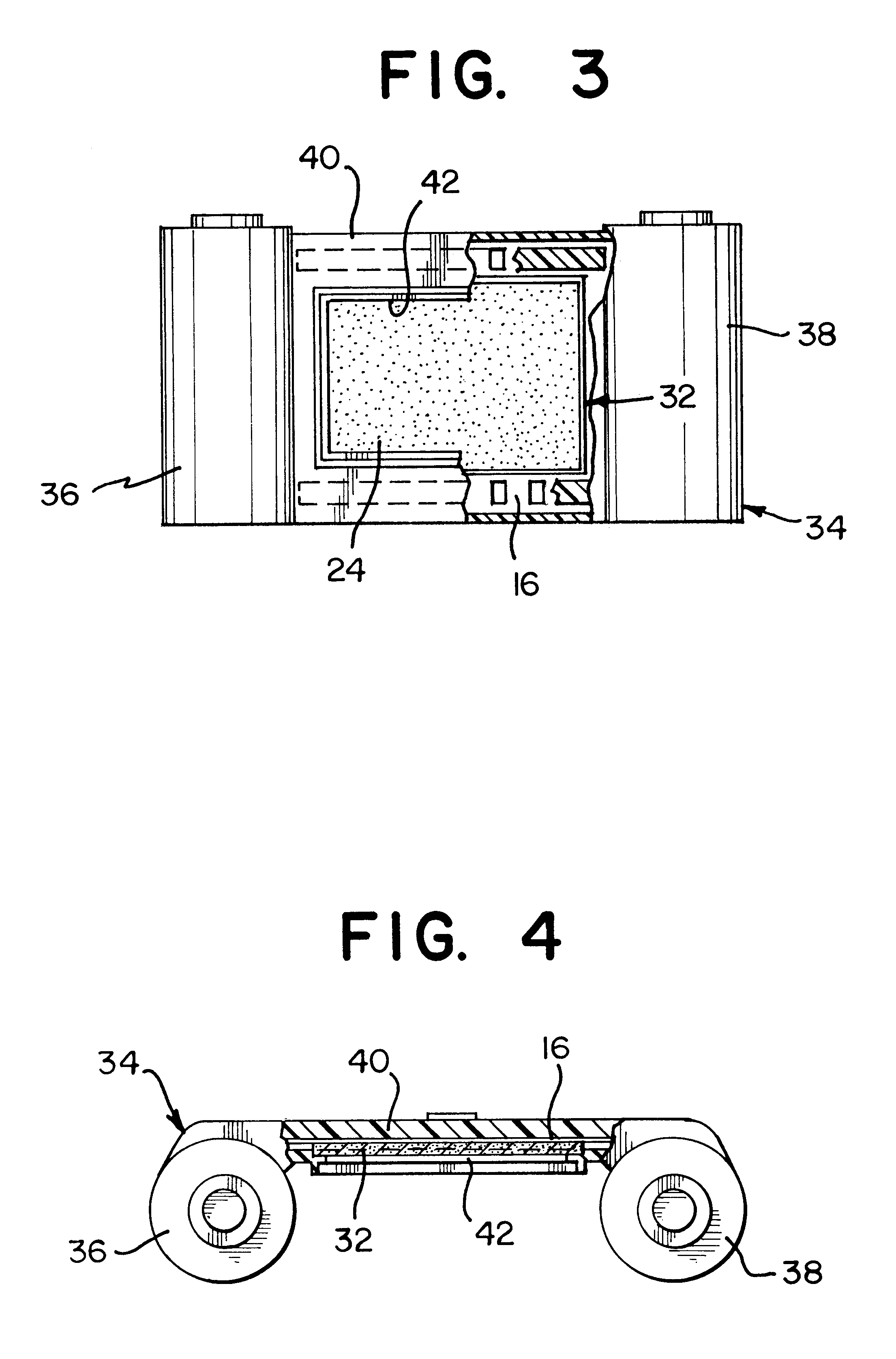Image modifiers for use in photography
a technology for modifiers and images, applied in the field of photographic image modification equipment, can solve the problems of uncontrolled light from a particular region of the framed scene reaching the corresponding region of the film without affecting the amount of light reaching the other regions of the film
- Summary
- Abstract
- Description
- Claims
- Application Information
AI Technical Summary
Benefits of technology
Problems solved by technology
Method used
Image
Examples
Embodiment Construction
Referring to FIG. 1, a camera 10 (an SLR) is shown having a camera body 12, a lens assembly 14 attached to a front side of the camera body 12, and a frame of film 16 shown in cross section at a film gate 18 (see also, FIG. 2c). An optical modifier 20, in accordance with a first embodiment of the invention, is positioned in front of the film 16 within the film gate 18. The specific structures of both the film gate 18 and the shutter mechanism 19 of the camera 10 are conventional and are therefore not shown in full detail. In this embodiment, the shutter mechanism 19 is located in front of (i.e., closer to) the lens 14, the modifier 20 and, of course, the frame of film 16.
The modifier 20, described in greater detail below, is sized and shaped to fit within the film gate 18 between the film 16 and the shutter of the camera 10. A conventional, spring-loaded, film pusher plate 21 which is usually mounted to the inside surface of the door (not shown) of the camera (used to access the film...
PUM
 Login to View More
Login to View More Abstract
Description
Claims
Application Information
 Login to View More
Login to View More - R&D
- Intellectual Property
- Life Sciences
- Materials
- Tech Scout
- Unparalleled Data Quality
- Higher Quality Content
- 60% Fewer Hallucinations
Browse by: Latest US Patents, China's latest patents, Technical Efficacy Thesaurus, Application Domain, Technology Topic, Popular Technical Reports.
© 2025 PatSnap. All rights reserved.Legal|Privacy policy|Modern Slavery Act Transparency Statement|Sitemap|About US| Contact US: help@patsnap.com



